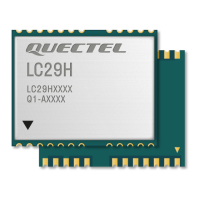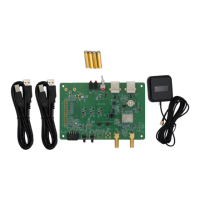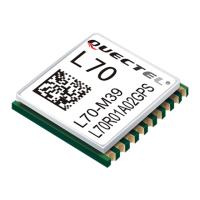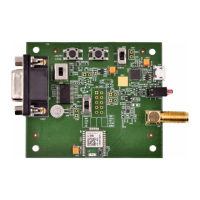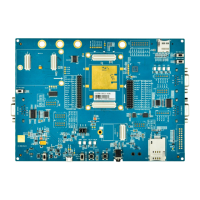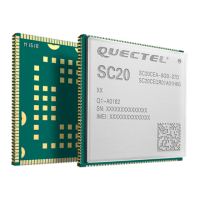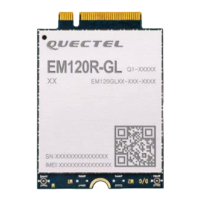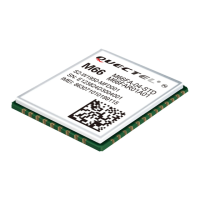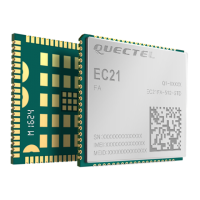
Do you have a question about the Quectel LC79D and is the answer not in the manual?
| Type | GNSS Module |
|---|---|
| Time to First Fix (Cold Start) | 28 s |
| Re-acquisition Sensitivity | -160 dBm |
| Cold Start Sensitivity | -148 dBm |
| Operating Temperature | -40 °C to +85 °C |
| Interface | UART |
| GNSS Support | GPS, GLONASS, Galileo, BeiDou |
| Frequency Bands | L1 |
| Update Rate | 1 Hz |
| Horizontal Positioning Accuracy | 2.5 m (CEP) |
| Dimensions | 10.1 mm x 9.7 mm x 2.5 mm |
| Protocols | NMEA |
Document revision history including date, author, and description.
Safety precautions for operation, service, and repair of terminals incorporating the LC79D module.
Overview of the LC79D as a dual-band, multi-constellation GNSS module with compact form factor.
Details the two variants of LC79D: LC79D (A) for standalone mode and LC79D (B) for host mode.
Explains Untethered Dead Reckoning technology for continuous, accurate positioning in challenging environments.
Lists key features including supported bands, power supply, sensitivity, TTFF, accuracy, and dynamic performance.
Presents the block diagram of the LC79D module, detailing its internal components.
Describes the Quectel evaluation board (LC79D EVB) for application development.
Lists the NMEA and PQ protocols supported by the LC79D module.
Illustrates the pin assignment for the LC79D module, showing LCC and LGA pinouts.
Provides detailed descriptions of I/O parameters and pin functions for the LC79D module.
Details the VCC power supply requirements and a reference circuit for the LC79D module.
Describes the operational modes of the LC79D module, including Full on Mode.
Covers the acquisition and tracking phases of the module's operation.
Explains the sleep mode functionality and how to enter/exit it using AT commands and AP_REQ.
Details the standby mode, its control via NSTANDBY, and saving/restoring time and location.
Describes the UART interface features for LC79D (A), including baud rates and voltage translation.
Outlines the SPI interface for LC79D (B), covering slave operation, speed, and DMA support.
Details the I2C interface capabilities, including supported modes, master mode, and address types.
Explains the boot interface and how the BOOT pin determines the module's working mode (Normal or Host).
Specifies the recommended antenna types and electrical characteristics for passive and active dual-band GNSS antennas.
Provides guidance on selecting antennas and reference designs for active and passive antenna connections.
Discusses CNR, thermal noise, system NF, and the impact of LNA gain on signal quality.
Shows a typical reference design circuit for connecting an active antenna to the LC79D module.
Presents a typical reference design circuit for connecting a passive antenna to the LC79D module.
Lists the absolute maximum ratings for power supply and digital pin voltages for the LC79D module.
Defines the operating conditions, including supply voltage, peak supply current, and operating temperature.
Provides current consumption values for different operating modes (Acquisition, Tracking, Sleep, Standby).
Emphasizes ESD sensitivity and outlines precautions for handling and processing the LC79D module.
Details the mechanical dimensions of the LC79D module, including length, width, and height.
Shows the recommended footprint for PCB layout to mount the LC79D module, including pad dimensions.
Displays top and bottom views of the LC79D module, showing pin numbering and labels.
Outlines storage conditions, shelf life, and requirements for handling opened vacuum-sealed bags.
Provides guidance on stencil thickness, reflow soldering temperature, and recommended thermal profile parameters.
Describes the tape and reel packaging specifications for the LC79D module.
Lists related documents with their SN, document name, and remark.
Provides a list of abbreviations and their descriptions relevant to the document.
